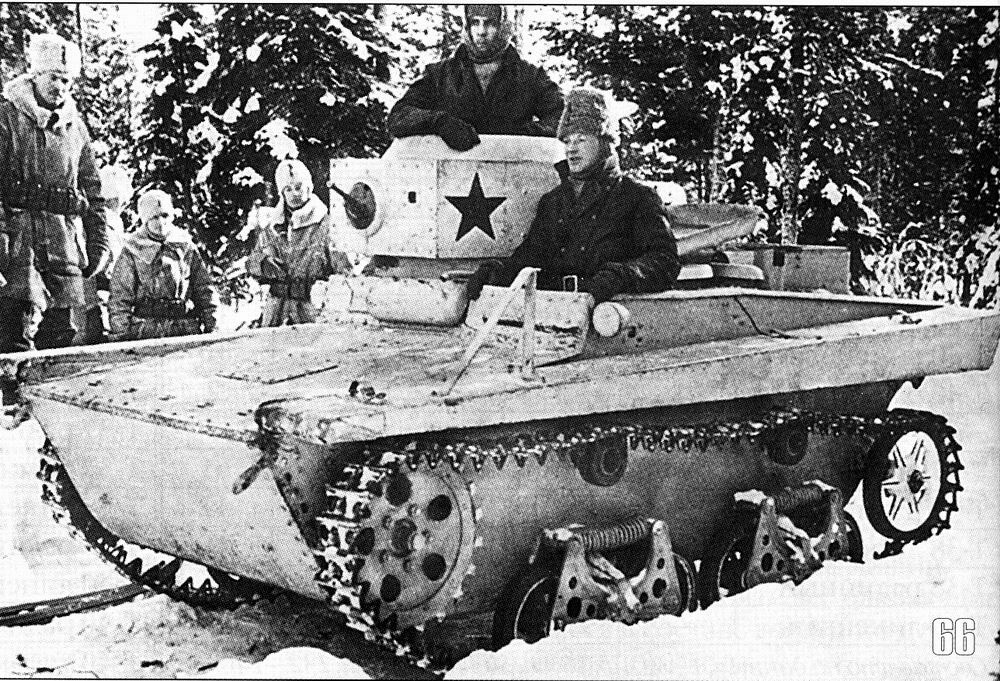
| Year | November 1933 |
| Vehicle Type | Light Amphibious Tank |
| Origin & Designer | [@designer] |
| Numbers Produced | 1.130 |
| Crew | 2 (Commander/Gunner & Driver) |
| Main Armament | Either: 1 x 7.62mm DT Machine Gun 1 x 12.7mm DShK Heavy Machine Gun |
| Main Armament | [@sponson_traverse] |
| Elevation | -5° to +5° |
| Turret Traverse | 360° (Manual) |
| Gun Traverse | [@gun_traverse] |
| Gun Mount | [@gun_mounts] |
| Maximum Range | [@maximum_range] |
| Armour Penetration | [@armour_penetration] |
| Gun Sight | MP |
| Secondary Armament | [@secondary_armament] |
| Smoke Discharger | [@smoke_discharger] |
| Ammunition Carried | 585 x 12.7mm or 7.62mm |
| Height | 1.82m |
| Width | 2.10m |
| Length | 3.75m |
| Combat Weight | 3.200 kg |
| Ground Clearance | 0.30m |
| Fording Depth | Floats |
| Trench Crossing | 1.60m |
| Obstacle Clearance | 0.50m |
| Climbing Ability | 40° |
| Radio | [@radio] |
| Armour | Hull Front: 9mm Hull Sides: 10mm Hull Rear: 9mm Hull Top: 6mm Hull Bottom: 6mm Gun Mantle: 9mm Turret Front: 9mm Turret Sides: 9mm Turret Rear: 9mm Turret Top: 6mm |
| Engine | GAZ AA (Petrol) |
| Transmission | 4 Forward & 1 Reverse |
| Maximum Road Range | 230 km |
| Maximum Cross Country Range | 103 km |
| Maximum Water Range | [@maximum_water_range] |
| Maximum Road Speed | 35 kph |
| Maximum Cross Country Speed | 6 kph |
| Maximum Water Speed | 4 kph |
| Variants | T-37TU: Command Version Equipped with Radio. T-37U: Command Version Equipped with Radio. |
| Notes | The T-37A was the world’s first massed produced amphibious tank and developed from a Vickers design tankette. It had just enough armour to stop a standard bullet and was armed with just a single machine gun. It was issued for use in a reconnaissance role, but many were used in the infantry support role. It first saw action during the Soviet 1939 invasion of Poland and many were still in use during the opening phase of Operation Barbarossa, these suffered huge losses against the well led and well equipped German spearheads. |